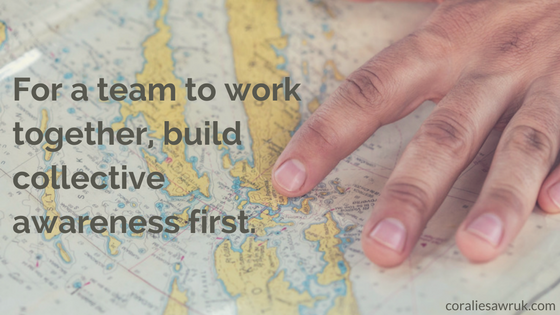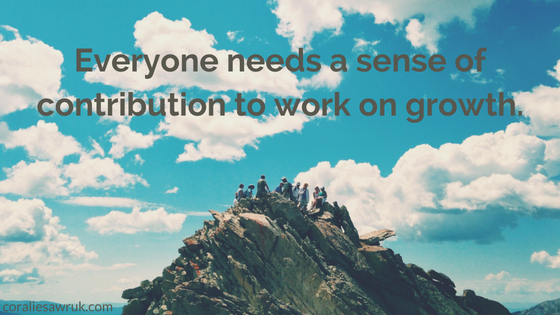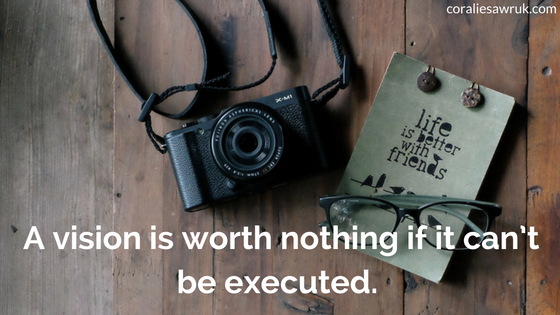How To Set Collective Goals And Boost Team Development

A recent survey by Deloitte showed that “nearly every CEO agreed that their companies are not developing skills fast enough or leaders deeply enough”.
Developing talent is one of the greatest challenges faced by a leader. True engagement goes beyond performance reviews or asking employees to set individual goals.
Whilst individual contribution is the foundation for teamwork, any successful delivery is the result of reaching a common target. This is the missing link: many managers don’t set collective team goals.
They ask employees to predict how their role will contribute to the wider success of the team, with little visibility on what lies ahead of them. And then they ask them to find solutions to their development gaps.
Would you find it easy to connect “what I think I could do” to “what could possibly happen”?
Let’s consider junior people, for whom it’s difficult to balance ambition with realistic possibility. Or millennials, who will expect you to discuss all objectives collectively.
Everyone needs a sense of contribution to work on growth. So if, like 85% of leaders in Deloitte’s survey, you want to make development a priority for 2017, it’s time to explore how to set collective goals and boost team development.
Before you set collective goals, connect to the big picture
Defining a success strategy in the dark is hard. You can’t expect people to row in the same direction when they have little visibility on where the boat is travelling to.

Take a national sports team, for instance. They travel to important competitions weeks in advance. They get familiar with all the external factors that could influence their performance, and therefore the final result.
When setting the vision for the future, your team should know the arena they’re going to play in. So before you ask them to set collective goals, give them a direction of travel. Communicate often to make strategy real in the day to day. Talk them through the main challenges; explain what will stay the same and what is going to change.
Getting a team to work together means first building collective awareness. People will own things they care about. But in order to assess their contribution, they need to become familiar with the context of their job.
Regroup around a common vision
If you look at successful teams, across various industries, you’ll notice one common feature…
They live by one rule: “we know our reality inside-out, and we have a collective vision to execute our mission within the real world.”
If you ask them: “One year from now, what story will we tell? What are the results we’re looking at?” You’ll get an explicit answer built from the various perspectives of the team members.
The best strength of a performing team is not the ability to predict the future; it’s their ability to anticipate challenges intuitively, and create the right conditions to generate solutions.
Before considering how to set collective goals, brainstorm with the team so that they can create their own vision. What are the upcoming challenges, how are we going to respond together? What do we really want to achieve? Are we expecting major disruption? How will we adapt to it? What do we need to bridge our current weakness gaps? Skills? People? Reorganization? Performance?
A collective vision will clarify the team’s hidden agenda and reinforce collective ownership. Suddenly, what was “someone else’s problem” becomes “everyone’s problem”. It becomes a way for all to find purpose and make an impact.
This is the best place for individuals to engage with their personal development plans.

Get your role right to make collective goals impactful
A vision — individual or collective — is worth nothing if it can’t be executed.
Setting objectives to measure your progress remains the sure way to succeed. When you set collective goals, the process is not much different from traditional goal setting (there’s a great post here if you need a refresh).
Goals act as a target. But if the outcome belongs to the team, the challenge belongs to their leader. How can you fine-tune your involvement to give the team freedom to find their own way, and simultaneously ensure their aspirations are realistic?
When it comes to setting collective goals, the leader should become a strategic advisor.

A seasoned leader has a precise idea of the level of maturity of her team, and the personalities that make it high-performing.
- Related: 4 personalities to educate a high-performing team
- Part 1 — Connectors and Analysts
- Part 2 — Creatives and Leaders
Therefore, she can guide the team towards stretching, or lowering expectations when targets are too ambitious or too low. She can help, too, with balancing three key areas of development that can’t be executed at the same time:
- Engage
- Develop
- Challenge
For instance, the team itself might be ready to progress, but some people have to be engaged individually first. The team might want to challenge the way they operate in very specific situations, but they need to develop individual accountability to secure collective success.
Team leads can see through those gaps, and this is where they can make the most sustainable impact. By adjusting the collective goal to maximise team development potential, they connect the reality of execution to individual progression.
Once team members are clear and engaged with the expected results, they will intuitively search for gaps in their own development. Suddenly, team members can go beyond the “what I can do to grow” and move towards “How will the results of my own performance fuel something bigger for all of us”?
Islands of misaligned individuals, trying to make sense of what their collective contribution would be like, are common factors to create silos in the workplace.
When you set collective goals, you invite all team members to work as a group. They positively impact productivity, as people are more engaged when they feel part of a wider goal. But their real impact is to anchor individual development into the reality of achievement. Making people aware of the potential of their contribution is what makes professional development meaningful.
Do you believe in collective goals? Share your story in the comments below!
Originally published at www.coraliesawruk.com on 6 December 2016.
